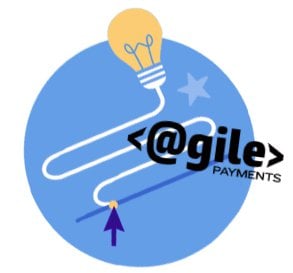 Payment Gateways play an integral role in facilitating ecommerce. Without the creation of a secure method for moving sensitive data the ability to conduct non face to face commerce could not have happened. Today there are many gateway providers serving up diverse solutions. But before 1996 there was no option. We wanted to understand the history and genesis of the payment gateway. For that there was only one person we could turn to: Jeff Knowles – the guy who invented the Payment Gateway and founder of authorize.net.
Payment Gateways play an integral role in facilitating ecommerce. Without the creation of a secure method for moving sensitive data the ability to conduct non face to face commerce could not have happened. Today there are many gateway providers serving up diverse solutions. But before 1996 there was no option. We wanted to understand the history and genesis of the payment gateway. For that there was only one person we could turn to: Jeff Knowles – the guy who invented the Payment Gateway and founder of authorize.net.
Jeff was kind enough to answer our questions. From idea to implementation, Jeff did it all and all before there was venture capital money being thrown at financial technologies. It truly is a fascinating story. Let’s get to it.
AgilePayments: Can you tell us what you were doing professionally at the time you came up with the idea of a payment gateway?
Jeff: I was originally an engineer at WordPerfect and had just left there to start a sales agent office for an ISO in 1995, while finishing my business schooling.
Agile: Can you walk us through the emergence of the gateway idea? Was there anything that specifically triggered the idea?
Jeff: The idea for Authorize.Net came from the strong demand from my non-retail clients wanting a PC-Based processing solution, instead of a Zon-Jr or Trans 330 terminal and printer. In early 1996, I had only 2 choices: sell my clients IC-Verify or PC-Authorize (both poor products for PC) , or sell them CyberCash (also very poor product for internet use).Having a software engineering background, I started exploring ways to process payments as a service for my clients, which saved them huge upfront expense of buying outdated terminal equipment. Bear in mind that Netscape was still the predominant browser and ISPs were cropping up all over the country offering dial up internet, beside AOL and others. It was really the dawn of ecommerce that year.
, or sell them CyberCash (also very poor product for internet use).Having a software engineering background, I started exploring ways to process payments as a service for my clients, which saved them huge upfront expense of buying outdated terminal equipment. Bear in mind that Netscape was still the predominant browser and ISPs were cropping up all over the country offering dial up internet, beside AOL and others. It was really the dawn of ecommerce that year.
Agile: We assume there were some logistical challenges and resistance from the powers that be at the time you started laying out the technical roadmap for the project. Can you tell us about some of those challenges?
 Jeff Knowles Made Payment Gateway History
Jeff Knowles Made Payment Gateway History
Jeff: “While initially exploring ways to create a “processing service”, there was little to go on. Netscape had a beta “Live-Payment” application, and CyberCash had major design flaws. There was nothing offered by Visa/Mastercard at all. I cold contacted First Data and obtained their leased-line spec for sending payment data, the same spec used by many POS systems at
the time for use when connected via hard data line. They sent me the spec with no questions asked, and I doubt they even wrote my name down. Using the spec and our hard line to First Data, which we immediately ordered and was provisioned by a network company called TNS, we were connected to First Data and began testing messages over the line. During our initial development phase, while forming the company Authorize.Net Corp and hiring additional software engineers, I began to offer “gateway” services via a very rudimentary method of gathering transaction details from merchants via email and fax and then parsing the information and processing it through PC based third party software on their behalf! The response time was hours, ha ha ha. This was fine at first until we had so many clients that we couldn’t keep up with the manual steps involved.”
 authorize.net beginnings
authorize.net beginnings
Agile: “How did you piece together the technical capabilities and resources to tackle the project? The payment gateway project began at a time where PCI compliance wasn’t even a blip on the radar. What security and fraud concerns did you have initially and did those concerns evolve before launch?”
Jeff: “Within only a few weeks we had tested and certified our ability to send transactions over the leased line to First Data. This wasn’t that difficult, although their spec at the time left much to be desired. The next step was to design the merchant interface and an API and encryption method for merchants to send us their transactions via the internet, using standard http calls (the early SaaS). This we offered in early 1997 after only a couple of months of engineering under our brand Authorize.Net, and merchants could connect to us via https using standard SSL encryption, and either use our API from their own pages, or simply login to our “Virtual Terminal”. No software download required. We believe that our use of the term “payment gateway” was the first in the industry at that time. As far as security, SSL was trusted by banks and was easy to implement, as opposed to CyberCash which required software to be installed on a merchant’s server to work along with their proprietary encryption (this was their fatal flaw in their design in my opinion).”
Agile: “Can you walk us through the development of the project in terms of a time line? For example, idea stage date, research start, idea validation, funding requirements, VISA MC cooperation, code development, infrastructure, beta, stable. “
Jeff: We started designing the first version of Authorize.Net in late 1996 and it was first available in April of 1997, approximately 6 months later. We introduced many updates and new versions over the next 24 months, and worked under a rapid development paradigm, with only 2-3 engineers actually writing code. Our deployment was always stable, although we had a few minor instances of down time as we learned along the way how to grow quickly and manage backups and redundancy. Our system was never breached by hackers. As for funding, the original concept of the payment gateway, as we had designed it, was first rejected by our own ISO, who lacked the vision to see what was surely coming. Instead of accepting our offer to invest with much needed capital, we were turned down as a “bad idea”. Subsequently, my own friends and family invested about $100,000.00 to get things started. Authorize.Net was profitable almost immediately. “
 Payments evolution into e-commerce
Payments evolution into e-commerce
Agile: “What was the initial plan to market the project and was the plan successful or did you have to change course?”
Jeff: “Authorize.Net grew extremely fast, as we offered our services through many existing merchant account sales agents all of whom were hungry for an ecommerce product to offer their clients (just as I was doing as a sales agent). Each sales agent could login to our system themselves and setup clients immediately, and they participated in the revenue stream with us. This plan was never changed due to its success. Later versions of the system included processing of ACH payments, and support for all the major processors, and within 2 years the company had been sold to Go2Net Inc, who continued the marketing strategy as well.”
Agile: “Really an amazing story. You saw a need that demanded a ground-up build out and you succeeded. We are now almost 20 years from your invention. Payment Gateways have evolved and are known as an integral part of almost every payment offering. Anyone in the payments space owes a debt of gratitude to Jeff Knowles. Thanks Jeff.”
 Authorize.net Founder – Jeff Knowles
Authorize.net Founder – Jeff Knowles
About Jeff Knowles: Jeff Knowles was born in California and resides in Orem, Utah, where he is currently the CEO of Vision Bankcard, Inc., an innovative bankcard technology company, which he founded in 2001, and the CEO of Vision Capital Group, Inc. a financial services and investment company, founded in 2008. Prior to Vision Bankcard, Jeff founded Authorize.Net Corporation in 1996, a credit card processing gateway company which pioneered the secure processing of internet credit card transactions. In 1999, Authorize.Net returned 90 million dollars to its shareholders when it was sold to Go2Net, Inc.
Today, Authorize.Net is owned by Visa and boasts one of the world’s most popular payment gateways. Jeff studied computer science and business at Brigham Young University and University of Phoenix and received extensive technical training at WordPerfect and Novell. Jeff is also active in humanitarian efforts, and is the trustee of the W Jeffrey Knowles Family Foundation, which has been involved locally in drug rehabilitation, domestic violence counseling, and education for the underprivileged, along with micro-credit and economic development in Africa. Jeff is a regular philanthropist, having made substantial donations to Brigham Young University and Utah Valley University, and numerous other charities.
About Agile Payments: Agile Payments is the #1 Partner for SAAS Recurring Payment Needs | Helping SAAS providers grow via strategic payment gateway integration.
https://www.agilepayments.com/
Be sure to check-out our payment gateway related white papers:
Data Hostaging, Payment Gateway as a Growth Strategy and Top 5 Payment Gateway Must Haves.





